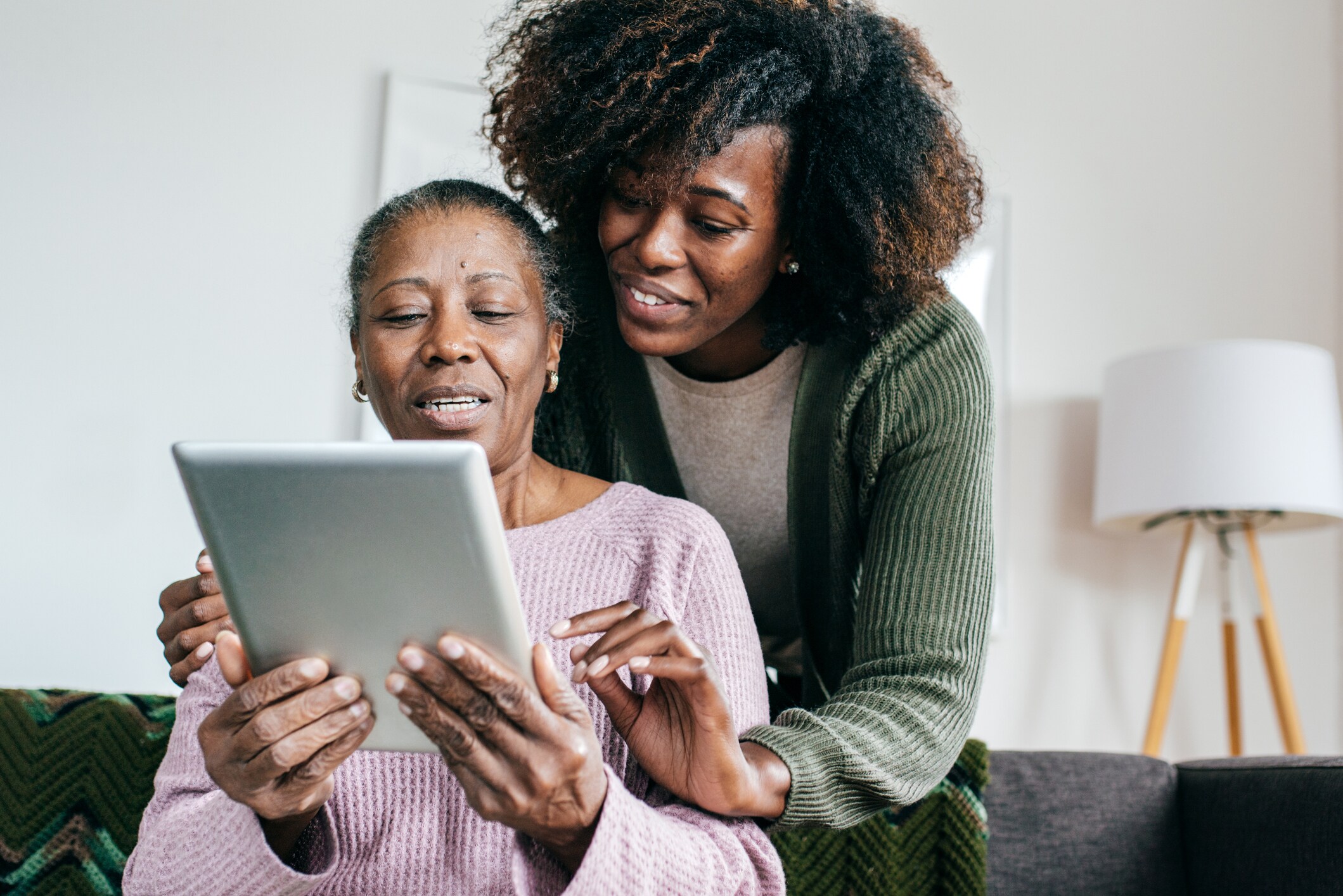If you’re a senior or care for one, you might be looking for easy ways to improve and maintain dexterity. Dexterity refers to our ability to use our fingers and hands effectively to perform tasks. It’s a skill that many of us take for granted until it starts to deteriorate. A person can experience issues with dexterity at any time, but it becomes more common as we age.
“Finger and hand dexterity is crucial for seniors because it directly impacts their ability to perform daily tasks independently,” says Dr. Eva Lassey, a physical therapist and the founder and CEO of DrSensory. That’s why it’s important to be aware of any emerging dexterity issues, and do what you can to maintain your dexterity. “Maintaining good dexterity helps seniors remain self-sufficient and improves their quality of life,” Lassy adds.
Here, we’ll take a close look at why finger and hand dexterity is important, what causes issues with dexterity — and most importantly, we’ll share some expert-approved hand and finger dexterity exercises.
Why is finger and hand dexterity important?
Finger and hand dexterity is important because it allows seniors to maintain independence, says Sarah Whitworth, an occupational therapist, certified hand therapist and owner of FYZICAL Therapy and Balance Centers in Sherman, Texas. “When finger and hand function decline, it is hard for people who live alone to manage tasks required to maintain health.”
Join Care for free
Specifically, finger and hand dexterity allows seniors to perform important activities of daily living, including:
- Cooking.
- Feeding.
- Cleaning.
- Getting dressed.
- Medication management.
- Writing.
- Using technology.
- Bathing.
- Maintaining personal hygiene.
As Lassey notes, good finger and hand dexterity also allows seniors to enjoy life and engage in hobbies, such as gardening, knitting or playing a musical instrument. “It also reduces the risk of accidents and falls caused by a loss of grip strength or coordination,” she adds.
Exercises to improve finger dexterity
The good news is that there are a variety of exercises you can do to both improve and maintain your hand and finger dexterity as you age. Our experts shared some sample exercises and tips.
1. Interlocking “O”s
How it helps: Whitworth recommends this finger exercise for improving dexterity.
How to do it:
- Make an “O” on each hand using your index finger and thumb.
- Interlace the “O”s from hand to hand.
- Gently try to pull the “O”s apart without letting the fingers move.
- Only pull apart as hard as you can without discomfort.
2. Hand-strengthening presses
How it helps: Whitworth recommends the following exercise for strengthening your hands.
How to do it:
- Place the thumb of your left hand against the side of your right index finger.
- Gently push the right index finger toward your thumb and left hand.
- Hold for five seconds.
- Move your left hand to the other side of your index finger and push toward your middle finger.
- Do this for each finger on each hand, holding for five seconds per finger.
- Repeat five times per hand.
3. Finger stretches
How it helps: These simple stretches can improve finger flexibility and reduce finger stiffness, says Lassey.
How to do it:
- Place your hand flat on a table or any hard surface.
- Slowly straighten your fingers so that your hand is as flat as possible without forcing your joints.
- Hold the stretch for 10-30 seconds.
- Release and repeat 3-5 times for each hand.
“Regular practice and consistency are key to maintaining and improving hand and finger dexterity.”
—Dr. Eva Lassey, physical therapist and the founder and CEO of DrSensory
4. Thumb touches
How it helps: This exercise can improve thumb mobility and coordination with your other fingers, says Lassey.
How to do it:
- Start with your hand open and fingers straight.
- Slowly touch the tip of your thumb to the tip of each finger, one at a time, forming an “O” shape.
- Hold each touch for a few seconds, then move to the next finger.
- Repeat 10-15 times for each hand.
5. Finger lifts
How it helps: The purpose of this exercise is to strengthen the muscles in your fingers and improve independence of finger movement, according to Lassey.
How to do it:
- Place your hand on a flat surface with the palm down.
- Spread your fingers apart slightly.
- One by one, lift each finger slowly off the surface as high as possible without straining.
- Hold the finger in the air for one or two seconds, then lower it.
- Repeat for each finger and 8-10 times per hand.
6. Grip strengthening with a ball
How it helps: Lassey says this exercise can increase overall hand and grip strength.
How to do it:
- Hold a soft, flexible ball (such as a stress ball) in your hand.
- Squeeze the ball as hard as you can without causing pain.
- Hold the squeeze for two to five seconds.
- Release and repeat 10-15 times per hand.
7. Finger pinch
How it helps: The intention of this exercise is to strengthen the pinching motion between the thumb and each finger, says Lassey.
How to do it:
- Hold a small object like a clothespin or coin between your thumb and one finger.
- Pinch the object tightly and hold it for five seconds.
- Repeat with each finger, 10 times per hand.
8. Change sorting
How it helps: Petrie says that a great way to work on fine motor skills is to practice sorting change.
How to do it:
- Gather coins into your hand one at a time until you have five or six coins.
- Insert the coins into a piggy bank or drop them into a bowl one at a time by working each coin from the palm of the hand out to the tip of the index finger and thumb.
- For an extra challenge, try identifying each coin by feel.
9. Wash cloth/dish towel hand exercises
How it helps: This exercise uses common household items to work on hand and finger dexterity.
How to do it:
- Hold a washcloth or dish towel by the corner using the tip of your index finger and thumb.
- Slowly gather it into your palm just using the tips of your fingers and thumb.
Repeat as long as it stays both comfortable and challenging.
“Our hands are remarkably complicated structures, so there are a multitude of factors that contribute to how and to what extent we lose our dexterity.”
—Trevor Petrie, occupational therapist, certified hand therapist and co-founder of Grace & Able
What causes poor hand and finger dexterity?
Declines in finger and hand dexterity are caused by the wear and tear that occurs in the body as we age. Often, a health condition will also impact our dexterity, says Trevor Petrie, an occupational therapist, certified hand therapist and co-founder of Grace & Able.
“Our hands are remarkably complicated structures, so there are a multitude of factors that contribute to how and to what extent we lose our dexterity,” Petrie explains.
Here are some of the most common conditions impacting our hands and fingers as we age:
Arthritis and osteoporosis
Both arthritis and osteoporosis can affect seniors. “Arthritis leads to joint inflammation and pain, while osteoporosis weakens bones, both impairing hand function,” Lassey explains.
Osteoarthritis
Osteoarthritis is the most prevalent type of arthritis impacting seniors. It’s characterized by tissue breakdown in your joints, and can impact your hand and finger dexterity.
Carpal tunnel syndrome
Carpal tunnel syndrome can impact anyone, but becomes more prevalent as we get older, impacting adults ages 40-60 the most. “Carpal tunnel syndrome compresses the median nerve, causing pain and weakness,” Lassey says.
Cognitive and central nervous system disorders
“Cognitive declines and some central nervous system disorders that can become more common as we age can affect how well we can perform fine motor control of our hands,” says Petrie. For example, Parkinson’s disease, Alzheimer’s dementia, stroke, multiple sclerosis and diabetic peripheral neuropathy are all associated with hand dexterity impairments.
Other ways to improve finger dexterity
Dexterity exercise can be strongly impactful when it comes to keeping our fingers and hands strong and pliable, but there are other factors to concentrate on as well, says Lassey. Here are her top tips for how to improve finger dexterity:
- Stay physically active overall.
- Add weight-bearing exercises into your routine to maintain muscle strength and joint flexibility.
- Participate in activities that require fine motor skills, such as knitting, doing a puzzle or playing a musical instrument.
- Eat a diet rich in anti-inflammatory foods, like leafy greens, fatty fish, nuts and seeds.
- Consume adequate amounts of calcium and vitamins to maintain bone health.
- Consider ergonomic tools and daily warm-up exercises to minimize strain on your hands.
Additionally, she adds, talk to your healthcare provider about medications (like ibuprofen) and supplements (like glucosamine and chondroitin) that can help with pain and inflammation.
The bottom line
Managing finger and hand dexterity issues can be challenging, but you don’t have to do this alone. If you have concerns about your own dexterity or if you’re caring for a senior showing signs of dexterity issues, make sure to reach out to a healthcare provider to get a diagnosis and treatment plan. “Consulting with a hand or occupational therapist for personalized exercises and treatments is also beneficial,” Lassey recommends.
Most of all, take heart in knowing that there are things you can do to improve dexterity, whether it be through hand and finger dexterity exercises, lifestyle modifications or helpful medical interventions. The most important thing is to take hand and finger dexterity seriously, and keep on top of it.
“Regular practice and consistency are key to maintaining and improving hand and finger dexterity,” Lassey emphasizes.





